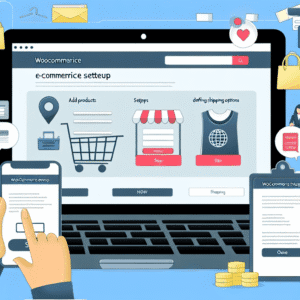In today’s competitive market, standing out can be challenging — especially for small and medium-sized businesses. One powerful yet often overlooked growth strategy is partnering with complementary businesses. By collaborating with companies that offer products or services aligned with yours, you can tap into new audiences, create shared value, and strengthen your market presence.
This post explores how to build effective partnerships, collaborate on cross-promotions, and expand your reach without overspending on advertising.
Why Partner with Complementary Businesses?
Think of a gym partnering with a local nutritionist, or a web designer working with a copywriter. These businesses don’t compete — instead, they complement one another. Such partnerships work because:
- Shared customer base – Your audiences likely overlap, but without competing for the same service.
- Increased credibility – A referral from a trusted partner strengthens your reputation.
- Cost-effective growth – Partnerships often require little to no advertising spend.
- Mutual benefits – Both businesses gain visibility, customers, and opportunities.
Step 1: Identify the Right Complementary Businesses
The key to successful partnerships is choosing the right businesses. Ask yourself:
- What services or products naturally complement mine?
- Who targets the same audience but isn’t a direct competitor?
- Would their values and branding align with my own?
Examples:
- A florist collaborating with a wedding photographer.
- A coffee shop teaming up with a local bakery.
- A digital marketing agency working with a web hosting company.
Step 2: Collaborate on Cross-Promotions
Once you’ve found the right partners, cross-promotions are a powerful way to expand your reach. Here are a few proven strategies:
1. Bundle Your Services
Offer a package deal that combines your products/services with your partner’s. For example, a fitness trainer and a healthy meal prep business could create a “Get Fit Package.”
2. Joint Events & Workshops
Host webinars, in-person events, or pop-up shops. A shared event means shared promotion — doubling your exposure.
3. Social Media Collaborations
Cross-promote each other’s content, run joint giveaways, or go live together. This introduces both audiences to new brands in a fun, engaging way.
4. Email Marketing Partnerships
Share each other’s newsletters or create co-branded campaigns. Since email subscribers are already engaged, this can deliver high conversions.
5. Referral Programs
Reward referrals between businesses. For example, a hair salon could recommend a nearby spa and vice versa.
Step 3: Formalize and Measure the Partnership
Like any business initiative, partnerships should be clear and measurable.
- Set expectations: Define roles, responsibilities, and goals upfront.
- Track results: Measure reach, customer acquisition, and sales from each collaboration.
- Review regularly: Adjust what works and phase out what doesn’t.
When both businesses see tangible value, the partnership will last and grow stronger.
Real-World Example
A small coffee shop partnered with a local bookstore to create a “Books & Brews” promotion. Customers who bought a book received a discount on coffee, and coffee customers got a coupon for books. The result? Increased foot traffic for both businesses and a new community of loyal customers who enjoyed the combined experience.
Final Thoughts
Expanding your reach doesn’t always mean spending more on ads or hiring influencers. By partnering with complementary businesses, you can grow your customer base, build trust, and create win-win opportunities.
Collaboration is the new competition — and smart businesses know that together, they can achieve far more than they could alone.
✅ Action Step: Make a list of three complementary businesses you could partner with this month. Reach out, pitch a cross-promotion idea, and watch your reach expand!







